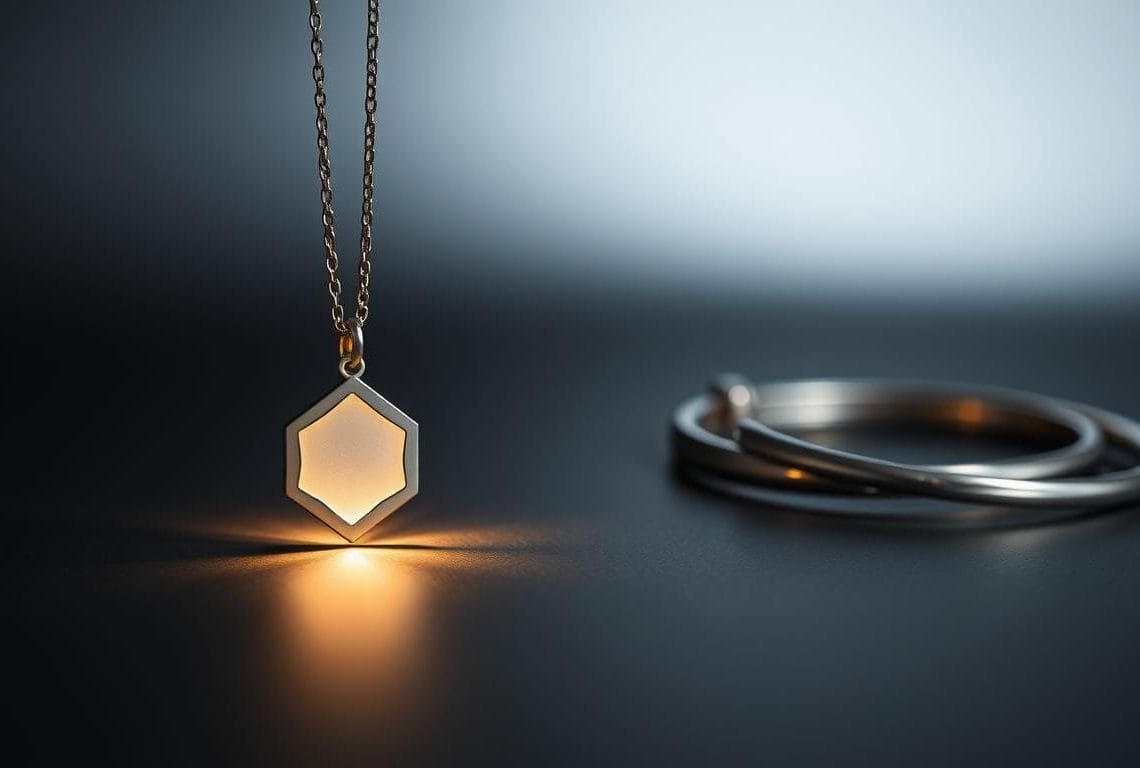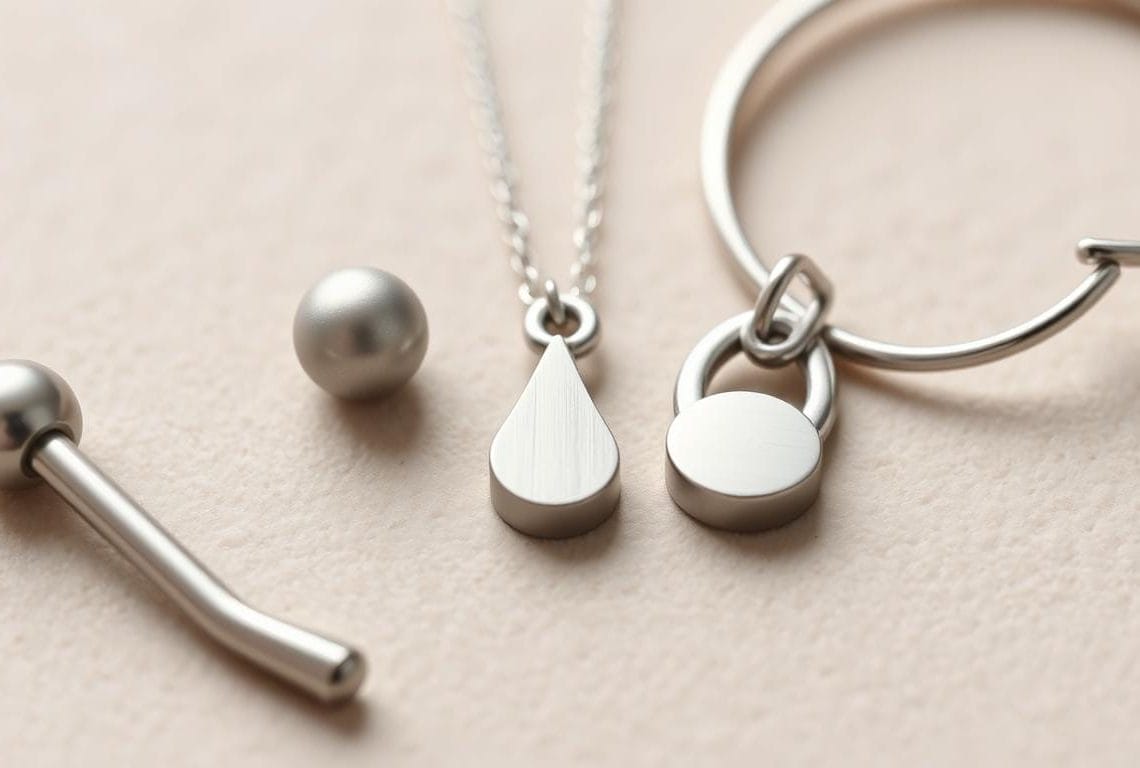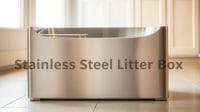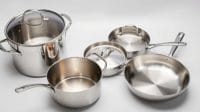Can one small choice in jewelry change how fast a fresh hole heals or how often it irritates? I ask that because I test materials and their effects on healing every day.
I compare implant-grade stainless steel and implant-grade titanium for safety, comfort, and long-term wear so you can make a confident choice for your body. I focus on real factors: nickel content, weight, corrosion resistance, and recognized standards like ASTM F136 and F138 endorsed by the APP.
I point out the core difference: titanium contains no nickel and is lighter, while surgical alloys may have trace nickel that can bother very sensitive people. I’ll also cover durability, pool and seawater realities, color options, and price over time to help you pick the right jewelry. Additionally, titanium is hypoallergenic, making it a safer choice for those with sensitivities. On the other hand, surgical steel advantages in piercings include its strength and resistance to corrosion, making it suitable for long-term wear in various environments. Understanding these factors will ensure you make an informed decision that aligns with your lifestyle and preferences.
What I Consider First for Safe, Comfortable Piercings Today
My first concern is how a material will affect early healing and everyday comfort. I assess chemistry, weight, and finish before anything else. Those three things shape the healing path and the wearer’s experience.
Who should pick titanium and who can wear surgical steel
Choose titanium if you have a history of metal reactivity or are someone sensitive to nickel. Titanium is nickel-free and lighter, so it often reduces movement and irritation in the first weeks.
Consider quality steel if you have no known sensitivities and want value plus variety after healing. ASTM F138 or 316L-grade options give strength and a classic look when sourced and finished correctly.
Why current best practices matter
- Standards first: The APP recognizes ASTM F136 titanium and ASTM F138 steel as suitable for initial wear when properly finished.
- Finish and fit: Mirror polish and smooth edges reduce friction and drag during tissue repair.
- Shop routine: I keep implant-grade titanium ready for first insertions and offer F138 as an alternative for non-sensitive clients who prefer the feel of steel.
Practical note: Both materials can be autoclaved when they meet implant-grade specs. I screen clients for sensitivity and discuss budget up front so the final choice meets safety and lifestyle needs.
stainless steel vs titanium piercing: the real differences that affect healing, comfort, and longevity
Here I compare the practical differences that matter for recovery, daily comfort, and how long jewelry lasts.

Nickel and allergies: Titanium is nickel-free by composition, which makes it a safer choice for people with nickel allergies. High-quality 316L and ASTM F138 steel still contain trace nickel and can trigger reactions in sensitive skin.
Healing and weight: I find lighter metal reduces drag and microtrauma. Lower weight often means less swelling-related irritation and a smoother early healing phase.
- Corrosion: Titanium forms an inert oxide layer that resists chlorine and saltwater.
- Durability: Steel is strong and cost-effective but can pit or dull with repeated pool exposure.
- Daily comfort: Titanium gives high strength at a lower weight, which helps with larger or longer jewelry.
Finish, color, and cost: Titanium can be anodized for stable colors. Steel keeps a classic silver tone. Titanium usually costs more up front, while quality steel offers value for healed holes.
Standards I trust: For safe initial wear, I look for ASTM F136 and ASTM F138 specs and prioritize autoclave-ready, mirror-polished pieces. When in doubt, I keep titanium on hand for new insertions and offer steel for healed jewelry options. For further reading on earrings and material choice, see this comparison.
How I choose metal by piercing type, skin sensitivity, and lifestyle
I match metals to anatomy and lifestyle to lower irritation and speed safe healing. That means I look at placement, past reactions, and daily habits before I pick a piece for you.

New piercings and sensitive skin: why I start with ASTM F136/G23 titanium
For fresh holes and people sensitive to metals, I default to ASTM F136/G23 titanium. Its nickel-free makeup and low weight cut down on movement and irritation during healing.
I also choose it when clients swim, sweat a lot, or do ocean activities because its corrosion resistance keeps the surface intact.
Healed piercings and frequent jewelry changes: when 316L/ASTM F138 steel makes sense
After full healing, I often offer 316L or ASTM F138 steel for variety and value. Many people tolerate this option well and enjoy the feel and price point when they swap jewelry often.
When clients report prior redness or itching to other metals, I keep them on titanium to avoid repeat irritation. I document materials in the shop record so we track what worked best during healing.
- I prefer implant-grade finishes and internally threaded or threadless posts to reduce trauma.
- I advise swimmers and gym-goers to favor titanium on high-activity days and rinse any steel pieces after salt or sweat exposure.
- We build a core set: titanium for start-ups, steel for healed rotation if desired.
For a practical comparison and earring-specific notes, I reference an in-depth guide on earring material choice and a broader steel titanium overview to help you weigh comfort, cost, and corrosion resistance.
My bottom line: choose titanium for the safest start, steel for value in healed piercings
I recommend starting with titanium because it is nickel-free, light, and less likely to irritate a new piercing during the fragile early weeks.
After full healing, high-quality steel offers more style and better price points for daily rotation. Be mindful that steel can show corrosion after repeated pool or chlorine exposure, so remove it for swims.
I always tell people sensitive to metals or with past allergies to favor titanium longer. Confirm ASTM ratings and labels before you add items to your cart or order for shipping. For a focused comparison on rings, see titanium vs stainless steel rings.






